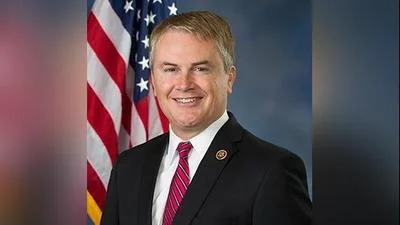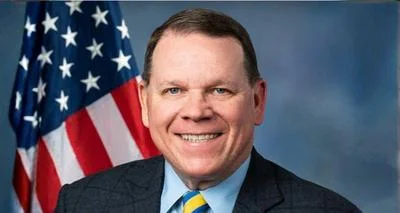A PDF copy of this fact sheet is available.
House Democrats won’t agree to $5 billion to President Trump’s wall, not only because it is an ineffective, mean-spirited attack on immigrants, but because there are far greater pressing needs. For instance, instead of funding Trump’s wall, Congress could focus resources on real national security and public safety priorities, by spending $2.5 billion to:
* Construct a new ice breaker to patrol the Arctic to combat Russian aggression,
* Hire 3,000 new customs officers to speed commerce and prevent drugs from illegally entering the country,
* Put 2,000 new police officers in our communities through the COPS program,
* Award funding to every community-level 2018 applicant to address substance abuse through the Drug-Free Communities program; and
* Direct $1 billion to update and secure out voting systems to restore faith in our democratic process.
Even after making all of these investments which, unlike Trump’s wall would actually keep us safe, we still wouldn’t have spent half of the amount Trump wants to waste on his wall this year. The following is a menu of options for investments Democrats prefer to make to grow the economy, create jobs, and help American families:
Enhance National Security
* Coast Guard: $785 million to procure one Polar Security Cutter and long lead time on a second icebreaker
* Customs officers: $100 million would hire 1,000 new officers
* Alternatives to Detention: $28 million would increase participation by 26,500 adults and a $30.5 million increase would expand family case management to 25,000 families annually
* ICE personnel:
** $19 million for 75 new Office of Detention Oversight Personnel to achieve semi-annual inspections of all over-72-hour detention facilities
** $17 million for 112 new ICE Health Service Corps Staff to improve healthcare services in detention facilities
** $83 million for 415 new ICE personnel dedicated to managing non-detained ATD docket
** $49 million for 275 new Domestic Investigation agents for MS-13; Opioid Investigations; financial crimes; trade; and cyber investigations, plus 162 support personnel
** $9 million for 28 new International Investigations agents, plus 5 support personnel
** $4.5 million for 45 new Intelligence Analysts
Build Safer Communities
* Department of Justice COPS: an increase of $265 million would hire 2,000 new police officers
* Office of National Drug Control Policy: an increase of $99 million for the Drug-Free Communities (DFC) program would support community-level efforts to address substance abuse programs in nearly 730 additional communities
* Legal Services Corporation: an increase of $200 million would mean that more than one million Americans would receive legal aid, including more than 73,000 senior citizens and 25,000 veterans
* Election Infrastructure: providing $1 billion to support state investments in updated and secure voting systems would ensure fair elections and restore faith in our democratic process
Create Jobs and Grow the Economy
* Economic Development Administration grants: an increase of $200 million would create or preserve 31,000 jobs
* NIST Manufacturing Extension Partnership: an increase of $30 million would create or preserve 23,000 jobs
* Small Business Administration Grants: an increase of $20 million would support dozens more Women’s Business and Veterans Outreach Centers providing business training, counseling and outreach to 47,000 additional US veterans and women
Invest in Americans’ Health and Education
* Community Health Centers: an increase of $100 million would increase access to primary health care services for hundreds of thousands of low-income individuals;
* SAMHSA Mental Health Block Grant: an increase of $100 million would increase access to mental health services for hundreds of thousands of individuals suffering from serious mental illness, including evidence-based programs that address the needs of adolescents or young adults with early serious mental illness;
* Senior Nutrition: an increase of $75 million would provide an additional 25 million meals to more than 2 million low-income seniors, including home-delivered meals to older adults who are homebound due to illness, disability, or geographic isolation.
* Head Start: an increase of $400 million would increase access to Head Start for approximately 36,000 low-income children.
* Afterschool: an increase of $250 million would increase before-, afterschool and summer school opportunities through the 21st Century Community Learning Centers program for approximately 250,000 children.
* Indian Health Service: an increase of $300 million for the construction of Indian Health Care facilities, would expand capacity and allow the Indian Health Service to provide more and better health care to the 1.6 million people it serves annually. The backlog for health facilities is estimated to be $10 billion.
* Bureau of Indian Education: an increase of $262 million would begin to improve the 185 Bureau-owned schools that serve more than 50,000 Indian students. The estimated need just to bring schools to an acceptable condition is $1.3 billion.
Improve America’s Infrastructure
* Highway Improvement Grants: adding $1.7 billion to the FY 2018 level of $2.5 billion would repave 1,679 miles of 2 lane highway. DOT estimates that there is an $836 billion backlog in capital investment needs for highways and bridges.
* Transit Infrastructure Grants: adding $166 million to the FY 2018 level of $834 million would purchase 221 buses. The American Public Transit Association estimates that there is a $90 billion state of good repair backlog in transit.
* HOME: adding $638 million to the FY 2018 level of $1.36 billion would provide 27,267 units of affordable housing and create 11,401 jobs.
* Housing for the Disabled: adding $100 million to the FY 2018 level of $229 million would create 1,039 new units of housing for people with disabilities. HUD indicates that at least 188,000 people with disabilities in nursing homes could be transferred to housing for the disabled units.
* Housing for the Elderly: adding $200 million to the FY 2018 level of $678 million would create 2,078 new units of housing for the elderly. According to the Joint Center for Housing Studies of Harvard University, only 36% of income-eligible seniors receive the rental assistance they qualify for today.
* Lead Hazard Reduction Grants: adding $50 million to the FY 2018 level of $230 million would remediate lead and other household toxins from 4,166 units of housing.
* Weatherization Assistance Grants: an increase of $46 million would provide weatherization services to approximately 45,000 low-income homes every year
* EPA State Revolving Funds: an increase of $1.143 billion would help meet and maintain public health and environmental standards for the nation’s drinking water and wastewater infrastructure. The federal needs survey shows that $745 billion is needed over the next 20 years.
* National Park Service: an increase of $640 million would help with repairs and maintenance to roads, buildings, utility systems, and other structures and facilities across the National Park System. These are necessary to preserve parks and ensure the safety of the 331 million people who visit the park each year, and the deferred maintenance backlog in the National Park system exceeds $11.6 billion.
Source: U.S. Department of HCA









